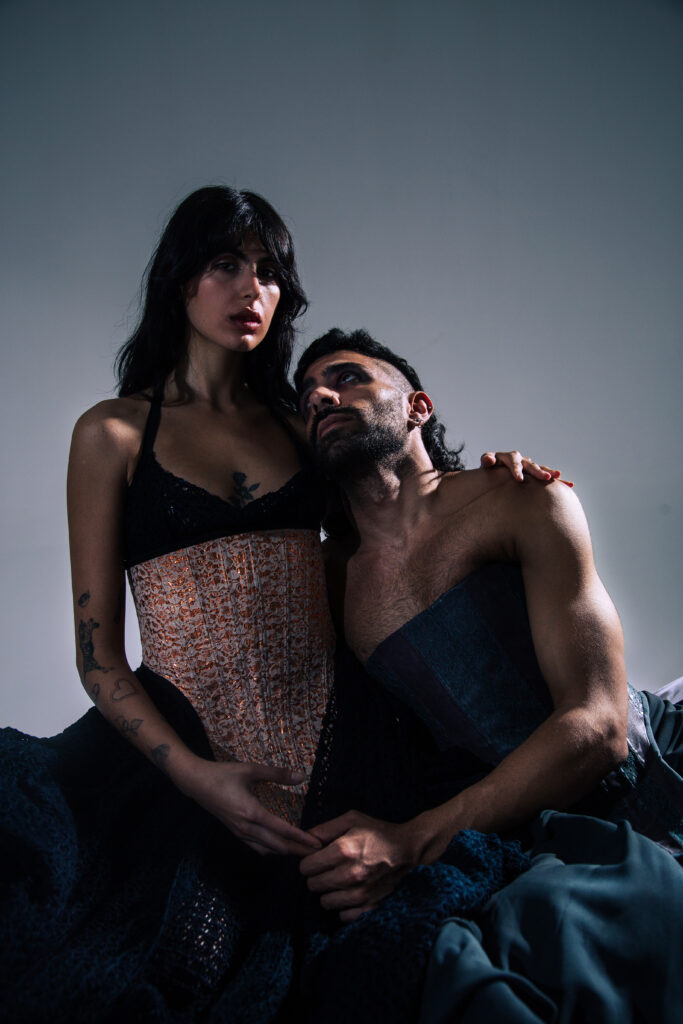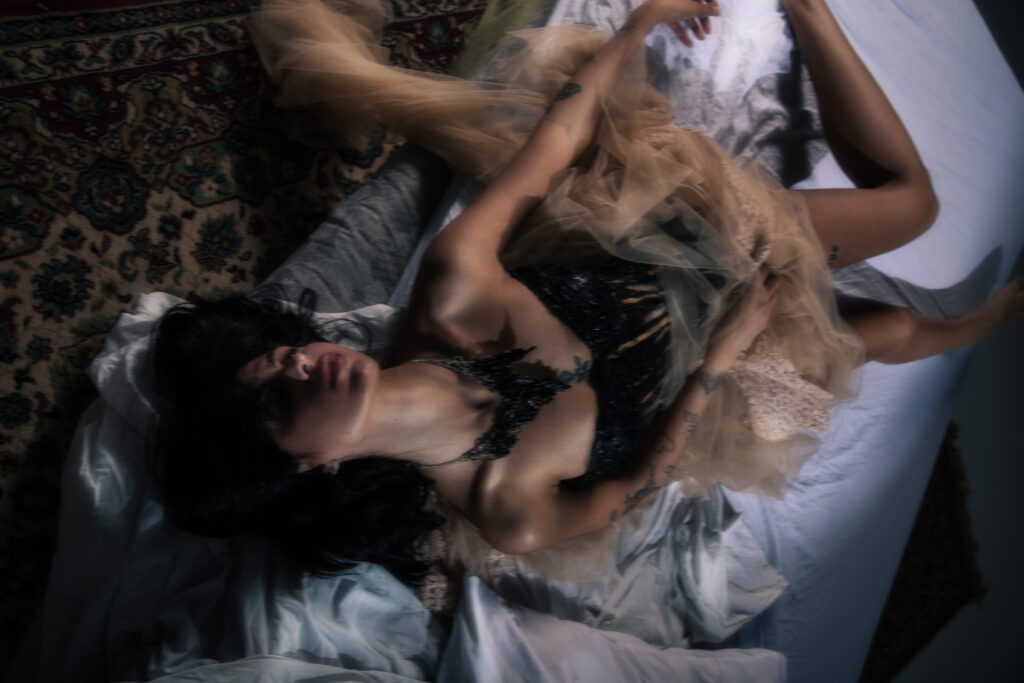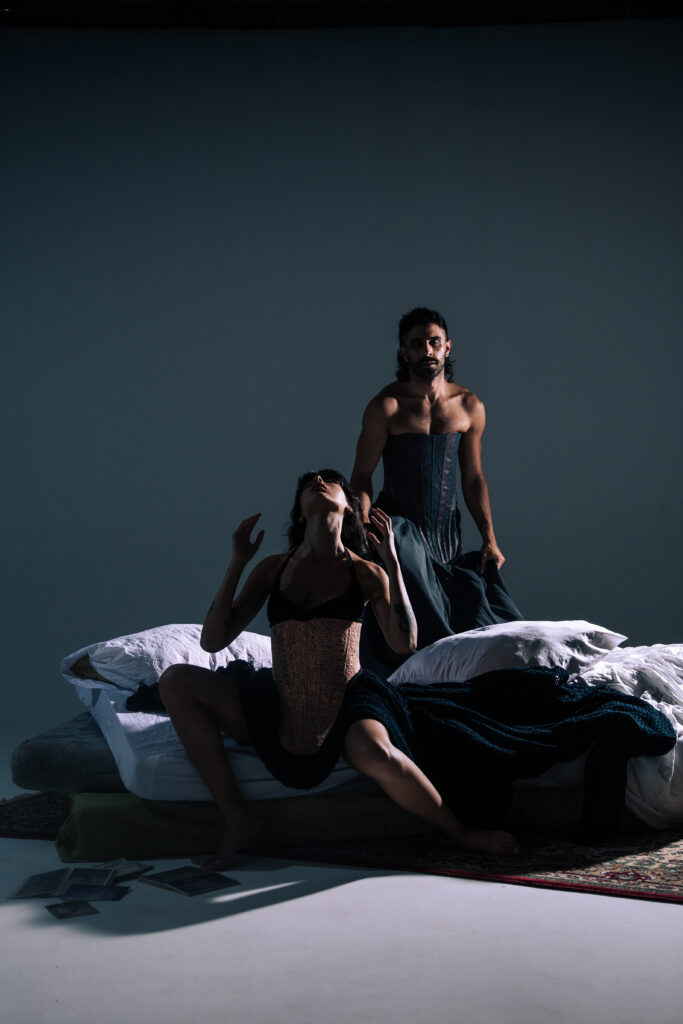Fashion as Testimony
Fashion has always been about more than clothing—it is language, memory, and testimony. For Mostafa AlSous, a designer whose work navigates silence, taboo, and the weight of human experience, fashion is nothing less than confession. His latest collection, Bawh (which means Confession), confronts silence directly. It reflects the untold stories of trauma and pain, especially those society attempts to bury—rape, scars, and the invisible shadows carried within the human body. Bawh transforms these silent burdens into textile testimony, rendering pain visible and collective, and turning garments into living confessions.
Mostafa does not design to decorate the body; he designs to give voice to it. Each stitch in his work is a deliberate act of remembrance, every fabric fold a fragment of history, every hidden layer a reflection of silence carried within. His design philosophy—honest, experimental, and rooted in memory and the human experience—forms the foundation of a body of work that challenges fashion’s superficiality and repositions it as a living archive of memory.
“Fragility and strength can coexist,” he says, explaining that his goal is for anyone who encounters his pieces to feel this tension. His garments are not meant to whisper but to speak—to testify that vulnerability can be as empowering as power itself. In this way, his work dismantles the divide between what is seen as weakness and what is celebrated as resilience.
The kind of person Mostafa imagines in his designs is not afraid to stand in truth.
They are bold, unapologetic, and willing to wear something that does more than cover—it communicates. Fashion, for them, becomes less about appearance and more about presence. It is not just a mirror of the external world but of the inner one. His designs are for those who use fashion not as decoration but as language, as dialogue.Textiles and techniques are the heartbeat of his craft. Handwoven fabrics, embroidery, and subtle details—sometimes hidden, sometimes exposed—carry profound meaning. Even elements unseen by the outside world are layered with memory.
“Even hidden elements within a garment—those not visible to everyone—hold meaning,” he explains, describing how silence itself can become a material in his process. By embedding these layers of memory into fabric, he transforms clothing into a sensory experience, creating a private archive for both maker and wearer.At the root of his creative journey lies personal experience. Silence, fear, memory—his battles with these forces are the deepest influence on his work. Yet beyond his own story, he listens to the voices around him, allowing the narratives of others to shape his vision. In this way, his brand, Mostafa.AlSous, becomes less about the self and more about the collective—an archive where many voices converge.
If his work could speak, it would say: “I am not just fabric. I am memory, voice, and testimony for those who could not speak.” This is the essence of his design practice: garments as witnesses, as vessels of memory, as echoes of silenced truths.
Looking Ahead
Mostafa envisions his brand expanding into a broader platform of storytelling through textiles—not just fashion but also art, performance, and sensory archive. His aesthetic will continue to blur the lines between wearable and conceptual, fashion and testimony. He refuses to confine fashion to trends; instead, he expands it into a space where memory and art intersect.
At its heart, his work carries a message of transformation. Vulnerability is not weakness. Scars are not endings. They are beginnings—beauty forged through pain, testimony shaped into visibility.


Through his designs, Mostafa urges others to recognize that the human experience, even in its darkest moments, can be translated into something seen, felt, and shared.As for the future, his openness to collaborations—whether editorial, artistic, or social—signals that his work is not closed but continually evolving. “I am always open to collaborations that carry meaning,” he says.
“Projects that create dialogue between art and society, and open up new and unexpected spaces for fashion to speak.”
In Bawh and beyond, Mostafa AlSous is proving that fashion can move beyond beauty, beyond surface, beyond spectacle. It can become archive. It can become testimony. It can become confession.
Check Out More Icons Around The World
